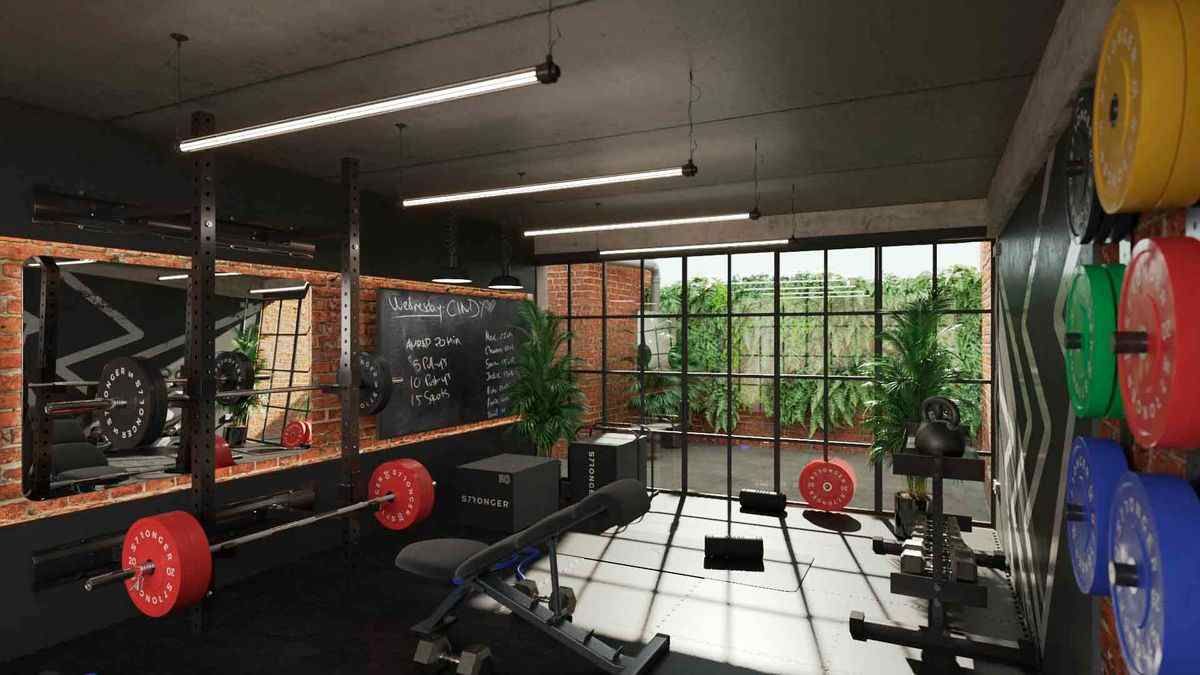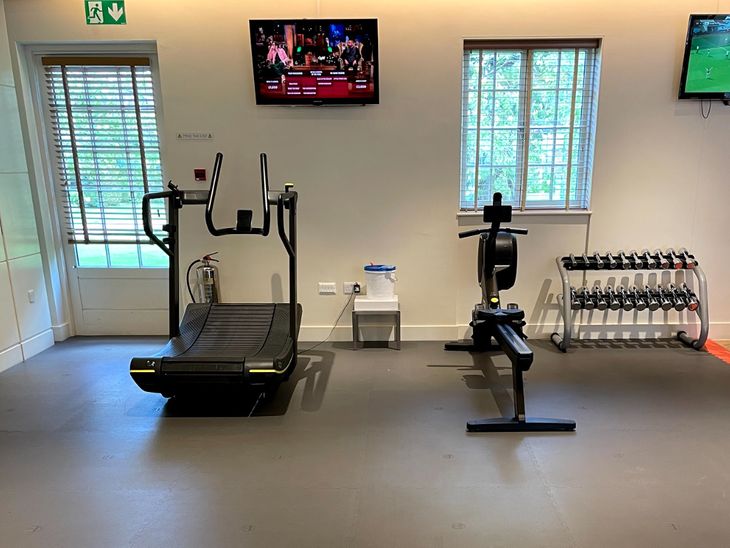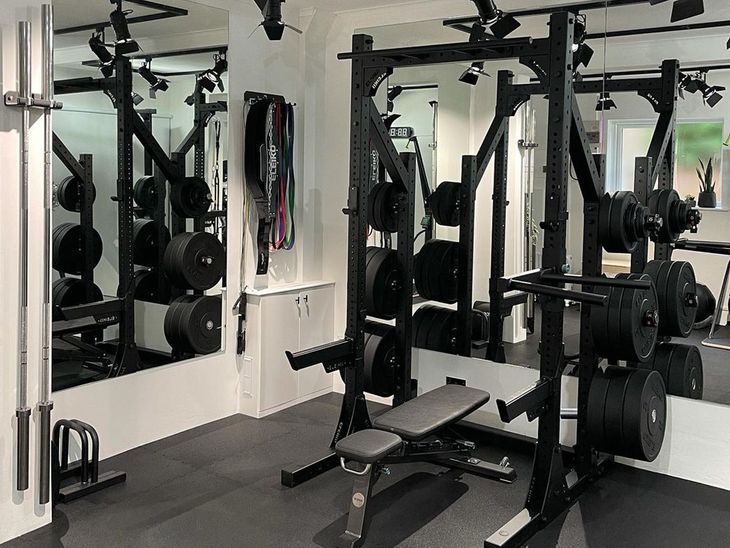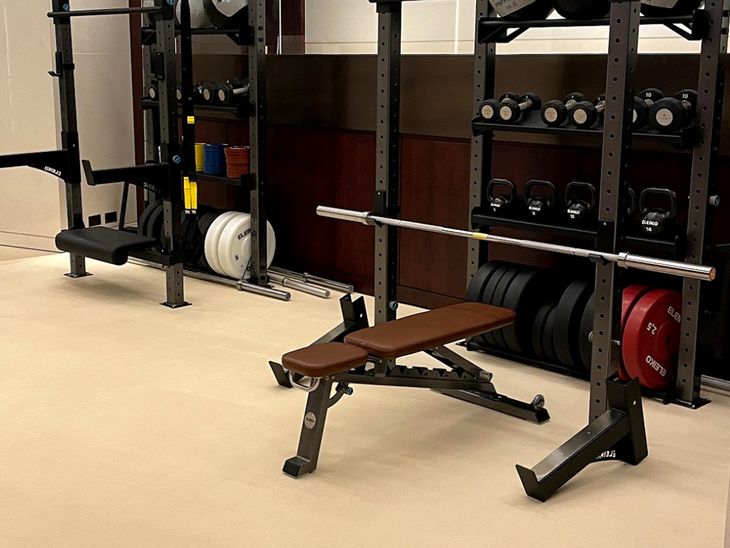Home Gym Flooring Essential Tips and Guide

When preparing to design your new home gym, prioritizing the selection of appropriate gym flooring is crucial.
If you believe that arranging your exercise equipment on a concrete floor in your house or garage is sufficient, then think again. Concrete lacks the necessary cushioning, stability, and traction essential for effective workouts. Engaging in activities such as weightlifting, cardio exercises, or jumping jacks on concrete floors may result in micro-injuries that can progress into more severe issues over time.
Therefore, thoughtful consideration for incorporating an appropriate floor should be a top priority in your home gym planning process.

The choice of flooring material significantly influences the safety, effectiveness, and enjoyment of your ideal workout space.
It plays a crucial role in determining how frequently and comfortably you can engage in exercise. Now, the question arises: How do you decide which type of gym flooring to invest in? Is there a single material that meets all the essential criteria?
Let's briefly explore this matter.
Priorities when choosing home gym flooring
Protecting your floor: Your flooring needs protection; even when training a few days a week your floor can take a beating. Dropping heavy weights or frequently moving equipment (e.g., treadmills, stationary bikes, rowing machines) can seriously damage your floor, so choose wisely depending on your type of workout.
Protect your equipment: Your home gym flooring needs to protect your fitness equipment and over time your investment will add up.
Stability: Non-slip flooring helps you maintain your balance during any workout. Remember that it's easy to injure yourself while training. Safety first, no matter what.
Shock absorption: The floor should ideally absorb the energy your body creates during movement and range of motion exercises. If not, you're likely to feel fatigued easily, and experience joint and muscle pain.
Sound absorption: Vibrations created by weights moving or dropping on the ground can be felt inside your gym and other parts of your house. Flooring plays an important role in preventing noise and vibrations from transferring out of your gym.
Design: A rubber gym floor doesn’t have to be black. You can choose from a number of finishes that will compliment your home beautifully.
Health & Safety: Your flooring should be free of noxious and toxic fumes, so make sure you choose the appropriate material.
Rubber gym flooring is the way to go
Given these considerations, rubber emerges as an optimal choice for gym flooring. Its commendable shock absorption properties make it gentle on the knees and joints, ensuring a comfortable workout experience. Furthermore, rubber flooring is firm yet slip-resistant, preventing accidents while maintaining stability.
The inherent springiness of rubber adds to its appeal, providing a resilient surface without being overly soft. Unlike softer materials that may pose a risk of ankle injuries, rubber strikes a harmonious balance between stability and traction, reducing the likelihood of slips and ensuring a secure workout environment.

When it comes to setting up a home gym, the choice of flooring is crucial, especially when dealing with weights. Traditional surfaces like concrete or hardwood floors in basements can be unwelcoming, particularly in chilly weather. Rubber, however, serves as an excellent thermal insulator, contributing to a warmer atmosphere in your home gym. Moreover, the noise-reduction properties of rubber flooring make it an ideal solution for maintaining a quiet exercise space at home.
Types of rubber gym flooring
There are different options in rubber flooring to make your home gym functional and stylish.
Rubber gym floor tiles
Interlocking rubber floor tiles look sleek and provide a secure, non-slip surface for all types of workouts. The seams are tight with no edges to trip over. Tiles made from natural rubber are more durable and appealing. They come in a variety of colors, so you have more flexibility in decking up your home gym to your personal preferences. Tiles are ideal for small spaces and installation is easy as there is no need for adhesive.
Rubber gym floor rolls
Rather than interlocking, floor rolls are installed using adhesive. The adhesive doesn't un-attach due to regular, heavy use. Rubber gym floor rolls have high tensile strength and are resistant to fatigue from wear. Colour options are usually fewer compared to rubber tiles. Rolls are a permanent solution to cover large gym areas.
Rubber gym floor mats
You can also create thicker flooring using rubber floor mats. They provide the same high-performing, durable and safe surface as rolls and tiles. Mats can be straight edged or interlocking, with the latter offering a tighter, more durable fit.
Heavy-duty gym flooring
Heavy-duty gym flooring solutions are designed to absorb impacts and falls in free weight areas of your home gym. They're basically recycled rubber flooring rolls installed using an adhesive. Heavy-duty gym flooring rolls are low-maintenance and available in multiple colours.

Wrapping it Up
Designing a safe and functional home gym with an exceptional workout experience requires careful consideration. Achieving the right workout surface is crucial, and it's highly recommended to include rubber floor tiles, rolls, or mats. Take the time to explore these options today to ensure that you make the correct investment in gym flooring for your ideal workout space.
You might also like these articles on how to make a home gym, making the most out of your home gym, the best folding exercise equipment, the best stationary bikes, and the best indoor rowing machines.